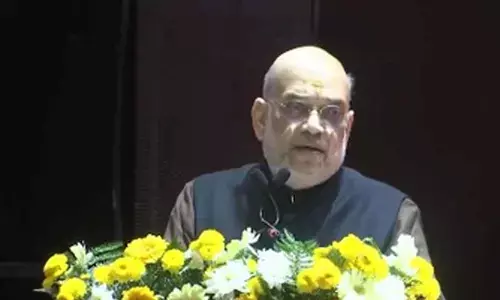Engineers develop battery alternative using cement & carbon black

Engineers at the Massachusetts Institute of Technology (MIT) have developed a novel, low-cost energy storage system that has been made using two of humanity's most ubiquitous historical materials - cement and carbon black (which resembles very fine charcoal).
New Delhi: Engineers at the Massachusetts Institute of Technology (MIT) have developed a novel, low-cost energy storage system that has been made using two of humanity's most ubiquitous historical materials - cement and carbon black (which resembles very fine charcoal).
The two materials, the researchers found, can be combined with water to make a supercapacitor - an alternative to batteries that could provide storage of electrical energy.
The technology could facilitate the use of renewable energy sources such as solar, wind, and tidal power by allowing energy networks to remain stable despite fluctuations in renewable energy supply.
The researchers said the supercapacitor could eventually be incorporated into the concrete foundation of a house, where it could store a full day’s worth of energy while adding little (or no) to the cost of the foundation and still providing the needed structural strength.
They also envision a concrete roadway that could provide contactless recharging for electric cars as they travel over that road.
"The material is fascinating,” said Admir Masic, professor at MIT, “because you have the most-used man-made material in the world, cement, that is combined with carbon black, that is a well-known historical material -- the Dead Sea Scrolls were written with it. You have these at least two-millennia-old materials that when you combine them in a specific manner you come up with a conductive nanocomposite, and that’s when things get really interesting.”
As the mixture sets and cures, he said, “The water is systematically consumed through cement hydration reactions, and this hydration fundamentally affects nanoparticles of carbon because they are hydrophobic (water repelling).”
And as the mixture evolves, “the carbon black is self-assembling into a connected conductive wire,” Masic said.
The process is easily reproducible, with materials that are inexpensive and readily available anywhere in the world. And the amount of carbon needed is very small -- as little as 3 per cent by volume of the mix -- to achieve a percolated carbon network, Masic said. The simple but innovative technology is described in a forthcoming paper in the journal PNAS.
Supercapacitors made of this material have great potential to aid in the world’s transition to renewable energy, said MIT professor Franz-Josef Ulm. The principal sources of emissions-free energy, wind, solar, and tidal power, all produce their output at variable times that often do not correspond to the peaks in electricity usage, so ways of storing that power are essential.
“There is a huge need for big energy storage,” he said, and existing batteries are too expensive and mostly rely on materials such as lithium, whose supply is limited, so cheaper alternatives are badly needed. “That’s where our technology is extremely promising, because cement is ubiquitous,” Ulm said.
















